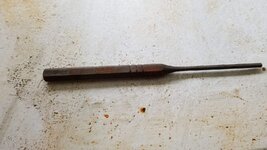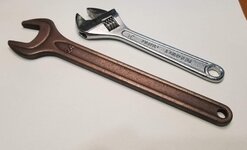- Messages
- 5,749
- Reactions
- 18,151
- Thread Starter
- #21
Unless you are already aware of it there is oil blackening. I have used this many times, up to recently on the front sight of a muzzleloading rifle. When done correctly (and it ain't difficult) it produces a very nice finish on small parts.
that is with a blow torch though right? I'm worried about messing up the hardening on the small parts or thin metal parts with that method.















